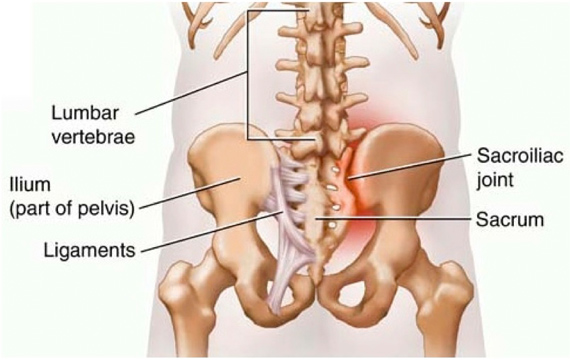Sacroiliac Joint Syndrome
Sacroiliac (SI) joint syndrome is a specific form of back pain that affects the area where the hip bones join with the base of the spine. The SI joint is thought to be involved in approximately 15% of chronic low back pain. This joint works as a buffer between the low back and hip joints.
While SI syndrome can begin without warning, it is often a continuation of a similar, milder condition called SI irritation. If treatment is not sought out when SI irritation is present, the condition can develop into SI syndrome. Pain may result from overlying musculature contraction due to instability of the joint. It is also important to note that the entire lower extremity functions as a whole and problems in the foot or knee may result in SI joint problems.
People with this condition usually experience localized pain in the low back, as well as pain in the groin, hip, or back/front of the thigh, but rarely below the knees. Those suffering from SI syndrome also commonly experience sharp pain after straightening up from a stooped position, often while lifting an object. Twisting, leaning forward, bending backward, and sitting for long periods of time can make the pain worse.

Patients with SI syndrome often respond well to manipulation. In acute stages, ice packs along with electrical stimulation or ultrasound work well to calm inflammation. If other dysfunctions of the lower extremity are noted, they must be addressed to prevent recurrences of the problem. Nutritional supplementation can begin immediately to help reduce inflammation. Rehabilitation exercises will be taught to increase stability of the region.
